|
The
Philco Portable Radio Project
A nostalgic World War Two era battery portable radio built for the real Summer of '42. A comprehensive story containing historical, educational, technical and biographical elements & opinions by John Fuhring
Introduction
This radio was given to me
sometime in 1961 by one of my mother's friends. I wasn't home at the
time, but my younger brother remembers when the radio was dropped off
for me. It is a hansom battery portable radio with a roll top
and even today it looks beautiful. For reasons I'll discuss
below, it almost
immediately went into storage in my brother's closet where it rested
for 50 years. When I was first given the radio it didn't work. It had a burned out detector tube and I had no idea where I'd get a replacement for it. Most importantly, the radio didn't have a shortwave band, so I really wasn't interested enough in it to start trying to fix it. Besides that, I didn't have a schematic diagram of the radio and back then, a schematic would have been nearly impossible to get. Only now, thanks to the Internet, are schematics and repair manuals available. Again, thanks to the Internet, replacement tubes are readily available too. By the way, I ungratefully failed to acknowledge the gift or thank my mother's friend for her thoughtfulness. I wish now I would have because, short wave or no short wave, I really love this old radio. Today this radio is a beautiful relic from the real Summer of '42 when people who were young and alive then went on picnics and outings with their battery operated portable radios and enjoyed the peace and beauty of the outdoors before the Second World War swallowed it all up and then left us with the Cold War with all the terrible rumors of Nuclear War that followed.  The radio with the top up,
operating on batteries and tuned into KGO in San Francisco.
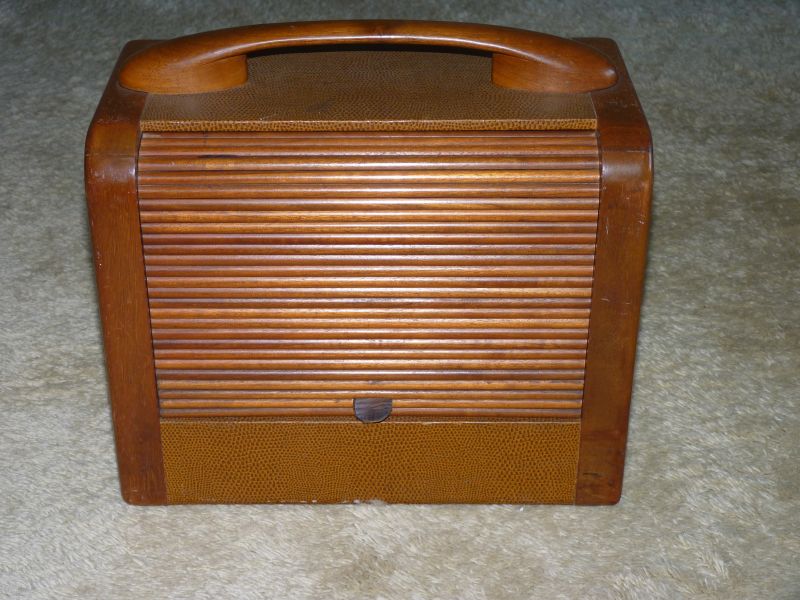 Here's the radio with the front
rolled down ready to be taken on a trip to the beach or to a picnic.
 What it looks like from the
back. Notice the nice woodwork.
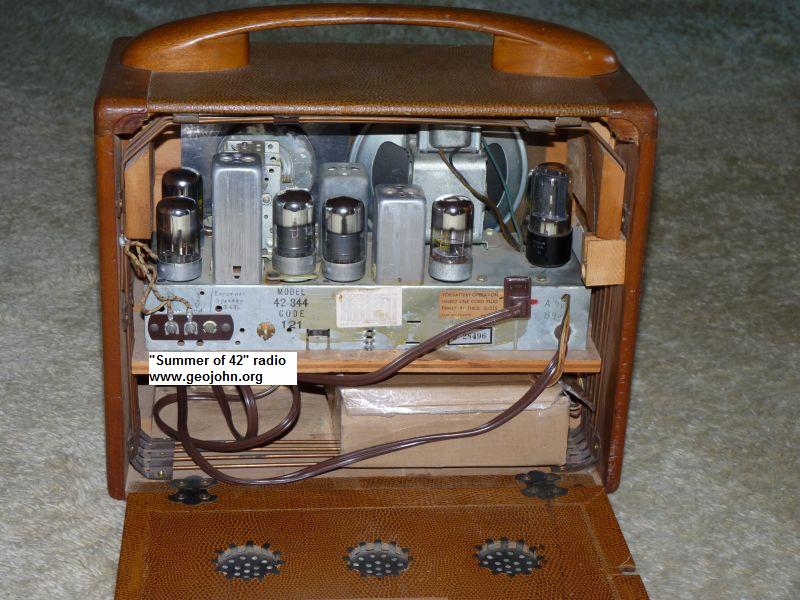 With the rear open you can see
the dry cell battery pack under the main chassis, the ac plug inserted
in the "battery operation" position, the 5 silver colored receiver
tubes on the left and the black rectifier tube on the far left.
The wires going around the inside of the radio case is the loop
antenna for pulling in AM stations. A label on the back suggests
using this radio to receive the sound while watching early, pre-war,
television.
These were rather expensive radios
for their time and worth about $400 in today's money so only the rich
and elite would likely own one. Only about 1,500 of these radios
were ever made and I wonder how many of them survive to this day.
I suspect
that I have one of the nicer ones and mine is complete with a battery
pack I made up
from 9 volt transistor batteries that allows me to play the radio
either plugged in or portable.
Speaking of batteries, this radio was made by the Philco Radio Battery Company. In the early 1920's the Philco company made a good living making batteries for the early radios of that era because the early radios really ate up batteries. That's all Philco made at the time but by the mid 1920s the first AC rectifier tubes started coming out along with the development of electrolytic filter capacitors and that doomed radio batteries to a small niche market. There were still battery operated radios on farms that didn't have electricity and early portable and military radios, but the market was shrinking fast. Rather than go out of business, Philco reinvented itself and began to make good, high quality, but very affordable radios. Old brands like the super quality Atwater Kent's did not want to cheapen their name, so they simply decided to stop selling radios and go out of business. With the passing of the super quality radios, this left the radio market to such brands as GE, Motorola, Emerson, Zenith, RCA, Philco and about 500 other lesser known brands. Of all the brands, the Philco radios stayed very popular because they were well made, very good looking and relatively cheap. I said "relatively cheap" because these radios were expensive by today's standards. All radios sold before the late 1950s, regardless of quality, had to be hand made and each of their many, many expensive electronic components had to be hand soldered in by trained technicians in a very labor intensive way. Even the cabinets housing these radios were elaborate wooden or Bakelite designs that had to appeal to the buyer and all that added up to a rather pricey consumer item. There were radio stations everywhere and the marvelous entertainment they provided people back then before TV and personal computers made their price well worth it. The poorest families owned at least one radio and everyone gathered around their set to listen to FDR's "Fireside Chats" reassuring everybody that they "had nothing to fear but fear itself" and this is what got a lot of people through the Great Depression and the anxieties of World War Two. The country was never so united or so culturally sound as during the heyday of AM radio. 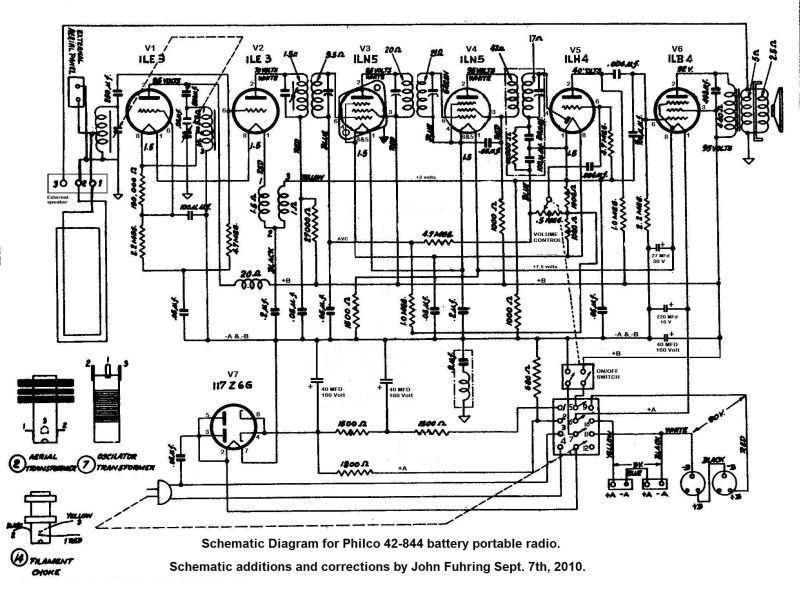
Like so many other schematics, I
pulled this off the Internet and then redrew for clarity and ease of
tracing down any problems with the operation of the radio.
Because this radio is designed
specifically for battery operation, it uses low voltage "directly
heated cathode" type tubes. This means that the filament is also
the cathode of each of the tubes. Having directly heated
cathodes means that the wiring of the heater
circuits has to be somewhat complex than it would be in "indirectly
heated cathode" designs It took a bit of figuring out how the
filaments were wired up and switched around when I first started this
project.
Of course, this radio uses RCA patents and is a superheterodyne design. The superheterodyne is what all modern radios are based on, but the concept goes back to when it was first developed during WW 1 by the brilliant radio engineer, Edwin Armstrong and patented by RCA. The first superheterodyne radios came out in the early 1920s when vacuum tubes were undergoing a rapid evolution, but only the best and most expensive radios (like the Atwater Kent radios) could afford to use this design and the fantastic new tubes the design required. By the late 1930s, the evolution of high performance and affordable vacuum tubes had come a long way and almost all radios were based on the superheterodyne. The superheterodyne receiver circuit of this radio is somewhat unusual (and a little complex and actually rather old fashioned) because it uses separate triode tubes (1LE3's) for the local oscillator and the heterodyne mixer (AKA "the first detector"). The heterodyning to produce a 455 KC Intermediate Frequency (the IF frequency) is accomplished by having the filaments/cathodes of the two triode tubes coupled together by being in series with each other. In other words, the Local Oscillator signal from the first triode is coupled to the second triode through their filament circuits and mixes with the radio station signal in that tube. This tube pair is isolated from the filaments of the other tubes by a rather unusual a double choke that is bypassed in the center by a capacitor. This radio is further unusual in that it uses two tubes (both 1LN5s) in the IF amplifier stage instead of the usual single tube IF amplifier. Strangely enough, only one of these tubes (the one that is rubber mounted) is actually controlled by the automatic gain control (AGC) line. As unusual as it is, the radio pulls in AM stations quite well, although I think a simpler and more conventional pentagrid converter tube with a single IF tube would work just as well. This radio went on sale late in
1941 for the summer of 1942. Curiously enough, a rear sticker
suggests using
the radio for listening to the sound of early TV broadcasts.
There is a tap on the output audio transformer so that an
external speaker can be connected and the radio can then be used to
fill a TV
room with sound. Of course, World War 2 quickly put an end to
early television and commercial television didn't get started again
until the mid
1950s. Sometimes I wonder just how far along TV would have come
by the time I was a kid
if WW 2 wouldn't have delayed it. I wonder if people would have
been watching big screen color TV sets by the late 1940s?
As mentioned, I made up a battery pack for this radio consisting of several 9 volt transistor batterys in parallel for the 9 volt 'A' battery (to run the filaments) and several 9 volt transistor batterys in series to make up the 96 volt 'B' battery. I can tell you that either operating off AC power or the internal battery pack, this radio pulls in the stations, especially at night. Sadly for me, I must also mention that the AM band is today a tragically sad remnant of what it once was. In the evening hours I listen to KGO up in San Francisco (810 KC on the dial) and it is as interesting and as wonderful a station as it has ever been, but the few local AM stations that remain are simply trash. This trash ranges from the absolutely ubiquitous and awful right-wing Hate Talk Radio to the equally disgusting right-wing Christian Radio preaching their messages of intolerance as if they were speaking for God and not their own twisted and goofy beliefs. It is such a disappointment to me that here in my area, there is absolutely nothing to listen to during the day time on AM. Well, that's not necessarily true, because there are two stations in my area that play Mexican music and listening to them is a whole lot more fun than listening to the sick propaganda and downright insanity that is being broadcast by people like Glenn Beck and Michael Wiener (AKA 'Savage') hour after hour after hour. It is so sad to realize just what AM radio has degenerated down to, but AM radio is an extremely ancient entertainment media that has now become entirely obsolete and may disappear entirely within the next few years because people have so many other and better forms of entertainment to listen to and watch. And you know the sun's settin' fast, And just like they say, nothing good ever lasts. Well, go on now and kiss it goodbye, But hold on to your lover, 'Cause your heart's bound to die. Go on now and say goodbye to our town, to our town. Can't you see the sun's settin' down on our town, on our town, Goodnight. Having arrived this far,
obviously you have a superior attention span and reading ability that
far exceeds that of the
Did
you enjoy this article
or did it suck?majority of web users. I highly value the opinion of people such as yourself, so I ask you to briefly tell me: Please visit my guest book and tell me before you leave my website. If you have an antique AM radio and you need something decent to listen to, perhaps you should buy or build your own  Low Power AM transmitter If you liked this article, perhaps you'd like the story of 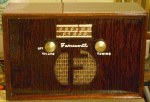 My very rare 1942 Farnsworth portable radio You might be interested in another World War Two era radio that was very popular with our troops and can still be found in places around the world where our GI's were stationed. 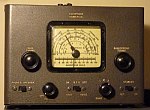 My WW II Echophone GI's Shortwave Radio I have two even older and really wonderful radios from the 1930s you might like to read about.  My beautiful Fairbanks Morse radio or maybe you'd like to read about 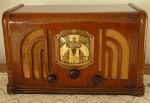 My rare art deco Troy Radio and Television Company table radio. Recently I found and restored a 1938 Crosley Super 8 radio that was from a posponed repair job 50 years ago  Please go to my Crolsey Radio Story For a simplified, but more in depth explanation of how this and similar radios work, you might be interested in 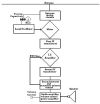 An essay on the Armstrong Superheterodyne Radio Principle I have a lot of other stories about my antique radios and an essay on early radio detectors you might like.  |